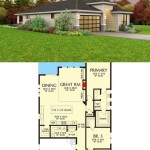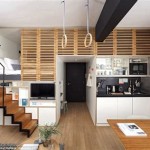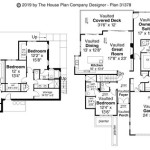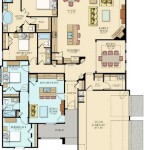Cost Of Architect To Draw House Plans In Kenya
Embarking on a construction project, particularly building a house, necessitates meticulous planning and adherence to regulatory standards. In Kenya, engaging an architect to draft house plans is a crucial initial step. Understanding the cost implications associated with this service is paramount for effective budgeting and project management. The cost of an architect in Kenya for house plans is influenced by various factors, making it essential to analyze these determinants to arrive at a realistic estimate.
Architectural services encompass a range of tasks beyond simply drawing plans. An architect contributes to the overall design aesthetic, functionality, and structural integrity of the building. They also ensure compliance with building codes and regulations, which is critical for obtaining necessary approvals from local authorities. The fees charged reflect the expertise, experience, and time invested in the project. Consequently, it is important to consider the value derived from an architect's services rather than solely focusing on the initial cost.
The Kenyan architectural landscape is diverse, featuring a spectrum of firms and individual practitioners. The pricing structures vary widely, depending on the size and reputation of the firm, the complexity of the project, and the specific services offered. This article aims to provide a comprehensive overview of the factors influencing the cost of architectural services for house plans in Kenya, enabling prospective homeowners to make informed decisions.
Factors Influencing the Cost of Architectural Services
Several key factors contribute to the overall cost of engaging an architect for house plans in Kenya. These factors include the size and complexity of the project, the architect's experience and reputation, the scope of services required, and the prevailing market rates. Understanding these determinants allows for a more accurate cost estimation and facilitates effective negotiation with potential architects.
Project Size and Complexity: The square footage of the proposed house significantly impacts the cost. Larger houses require more detailed plans, extensive structural calculations, and greater design considerations. Similarly, complex designs, such as multi-story structures, houses with unusual shapes, or those incorporating specialized features (e.g., swimming pools, basements, or intricate landscaping), will necessitate more architectural input and, consequently, higher fees. The complexity also includes the terrain of the land. A sloping site, for example, will require more detailed designs than a flat site.
Architect's Experience and Reputation: Experienced and reputable architects, particularly those with a proven track record of successful projects, typically command higher fees. Their expertise translates into a higher likelihood of optimized designs, efficient space utilization, and compliance with building regulations. While engaging such architects may involve a higher upfront cost, the long-term benefits, such as reduced construction errors and enhanced property value, can outweigh the initial investment. Architects who are members of the Architectural Association of Kenya (AAK) often adhere to certain professional standards, which may influence their pricing.
Scope of Services: The extent of architectural services required plays a significant role in determining the overall cost. Architects may offer a range of services, including initial consultations, conceptual design, schematic design, design development, construction documents (detailed plans and specifications), structural engineering coordination, and construction administration (site supervision). Choosing a comprehensive service package will generally cost more than opting for a limited set of services, such as only obtaining the basic architectural plans.
Prevailing Market Rates: Market forces of supply and demand within the architectural services sector influence pricing. Geographical location also plays a role; architectural services in urban areas, like Nairobi and Mombasa, may be priced higher than in more rural areas due to higher operating costs and greater demand. It is advisable to obtain quotations from multiple architects to gauge prevailing market rates and ensure competitive pricing.
Common Pricing Models Employed by Architects
Architects in Kenya typically employ one of several pricing models for their services, each with its own advantages and disadvantages. Understanding these models is crucial for evaluating the cost-effectiveness of different proposals. The most common pricing models include percentage-based fees, lump-sum fees, hourly rates, and cost-plus fees. Each method is suitable for different project types and client preferences.
Percentage-Based Fees: This model involves charging a percentage of the total construction cost of the project. The percentage typically ranges from 5% to 15% or higher, depending on the complexity of the project and the architect's experience. This model is commonly used for larger projects where the construction cost is relatively predictable. However, it can be less transparent for the client, as the final fee is directly linked to the construction cost, which may fluctuate. It also incentivizes the architect to propose more expensive designs, potentially increasing their fee. Conversely, if the architect is overseeing the construction phase, it aligns their interest with keeping costs down.
Lump-Sum Fees: This model involves agreeing on a fixed fee for a specific scope of services. This provides greater cost certainty for the client and is often preferred for smaller, well-defined projects. However, it is crucial to clearly define the scope of services included in the lump-sum agreement to avoid disputes regarding additional services or changes to the original design. The architect bears the risk if the project takes longer than anticipated; however, they may also be less inclined to engage in extensive revisions.
Hourly Rates: This model involves charging an hourly rate for the architect's time. This is commonly used for consultation services or projects where the scope of work is uncertain or likely to change. Hourly rates vary depending on the architect's experience and the complexity of the tasks involved. This model provides flexibility but can be less predictable in terms of the final cost. Detailed time logs are essential to maintain transparency and avoid misunderstandings.
Cost-Plus Fees: This model involves reimbursing the architect for their direct costs (e.g., salaries, materials, travel expenses) plus a pre-agreed profit margin. This model is less common but can be suitable for complex or highly customized projects where the costs are difficult to estimate upfront. Transparency and meticulous record-keeping are crucial for this model to be effective.
Estimating the Cost of House Plans in Kenya
Providing a precise cost estimate for house plans in Kenya is challenging due to the variability of the factors discussed above. However, providing a range based on average market rates and project characteristics is possible. The following provides a general guideline for estimating the cost, bearing in mind that actual costs may vary.
For a small to medium-sized house (e.g., 2-3 bedrooms, approximately 100-150 square meters), the cost of architectural services for basic house plans, including conceptual design, schematic design, and construction documents, might range from KES 80,000 to KES 250,000. This would typically cover the drawings needed for building approval and construction.
For a larger or more complex house (e.g., 4+ bedrooms, multi-story, approximately 200+ square meters), the cost could range from KES 250,000 to KES 700,000 or more. This would include more detailed plans, structural engineering coordination, and potentially construction administration services.
These figures serve as a general indication only. To obtain a more accurate estimate, it is advisable to consult with several architects, provide them with detailed information about the project, and request written quotations outlining the scope of services and associated fees. It is crucial to scrutinize the quotations carefully and compare the services offered, as well as the proposed fees. Negotiating with the architect is also encouraged to ensure the pricing is competitive and aligned with the client's budget.
Beyond the initial cost of the house plans, homeowners should also factor in additional expenses, such as structural engineer fees (if not included in the architect's package), land surveyor fees (if required), and building permit fees. These additional costs can add a significant amount to the overall project budget.
In summary, determining the cost of an architect to draw house plans in Kenya requires careful consideration of various factors. By understanding these factors and engaging in thorough research and consultation, prospective homeowners can make informed decisions and ensure that their architectural needs are met within their budgetary constraints.

The Cost Of Engaging A Kenyan Architect For Complete Project Design David Chola

Cost Of Building A House In Kenya 2024 Estimate An Average To Co Ke

Architects In Kenya The Complete Schedule Of Fees Integrum

How Architects Charge In Kenya Nyumba

Cost Of Architect To Draw House Plans In Kenya West Real Estate Ltd

House Plans In Kenya The Concise 3 Bedroom Bungalow Plan David Chola Architect

Architects In Kenya The Complete Schedule Of Fees Integrum

3 Bedroom House Plans And Cost In Kenya 2024 Urban Rural Rates To Co Ke

3 Bedroom House Plans And Cost In Kenya 2024 Urban Rural Rates To Co Ke

The Cost Of Engaging A Kenyan Architect For Complete Project Design David Chola
Related Posts








